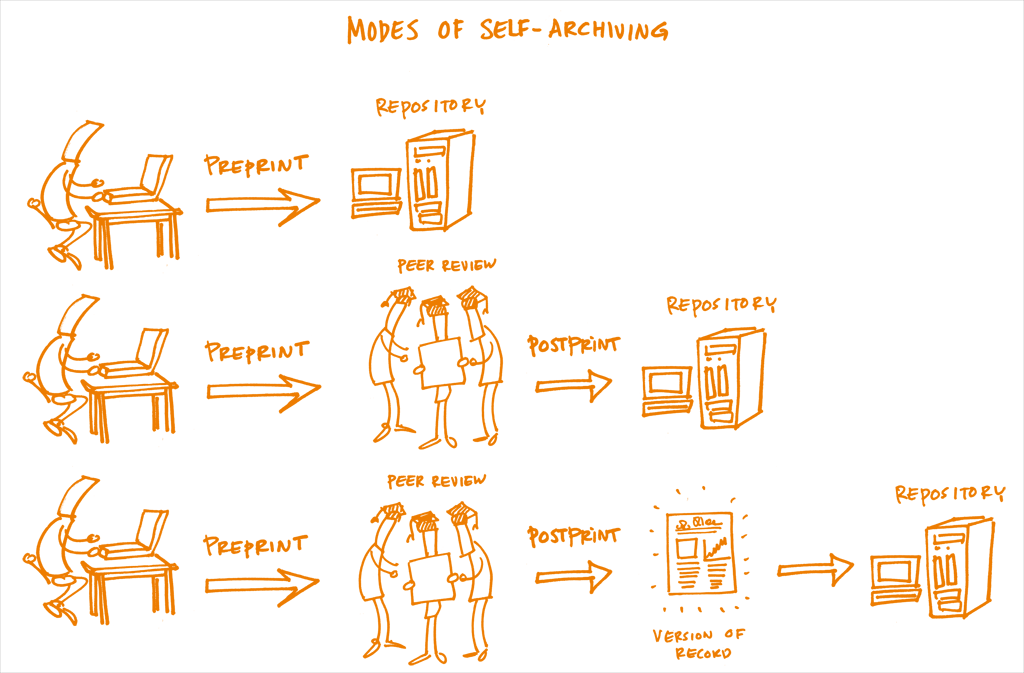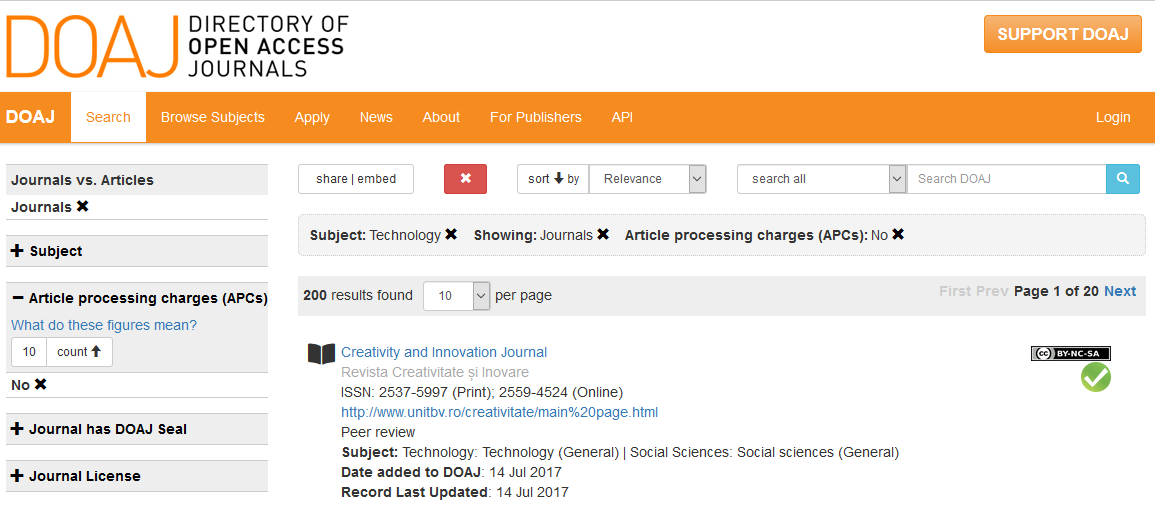Open publishing is beneficial for the whole society. And we will show you how to be OPEN!
If you are a scientist, an open approach will increase the visibility, usability and scientific impact of your published works.
What do you have to do for that?
+ Publish your article in a golden way in one of the open journal
+ Archive and share the published article (manuscript) in an open repository
Publishing in open journals
If you need to provide immediate access to a published article, ie. the golden way of Open Access, you need to choose an Open Access journal to publish in.
Information about openness should be traceable on the pages of the journal, but it is not always easy to find it – look into the section About the Journal, Open Access Policy, Instruction for Authors. The journal’s website or the individual articles should also contain information on under which Creative Commons license the content is published.
Another way to try to find this information is through the Directory of Open Access Journals. The journals included in the database are continuously checked for quality.
APCs
Because articles are freely available on the Internet, publishers lose their subscription income and have to pay for the costs of publishing the journal from other sources — either from the budget of the institution that publishes the journal (often for journals published by universities and professional institutions) or through fees (APCs — Article Processing Charges). These are usually not paid for by the author himself, but by his institution. Royalties are eligible costs in applications for research grants, so it is appropriate to think about them when writing applications.
In the Directory of Open Access Journals, you can filter journals that do not require APCs — limit the search to journals and you can select the APCs-No filter in the left sidebar.
Hybrid journals
Some journals offer the possibility to provide open access to specific articles, while the remaining content of the journal is accessible only on the basis of a subscription — these are so-called hybrid journals. When publishing in hybrid journals, the university pays double — for the subscription of the entire collection of journals and for open access to the article from this collection. Publishing in some hybrid journals is also more expensive than in fully open journals. This is an inefficient use of the money available to the university
Autoarchiving of a published article
The second method is known as so-called auto-archiving, which means that the author publishes in the traditional way in a journal of his choice and ensures open access to the full article in an open repository.
Different publishers have different conditions regarding self-archiving. You are not limited in the self-archiving of the preprint, which is the text of an article that has not yet been reviewed.
Most publishers allow postprint autoarchiving. The postprint is the version of the article after the peer review, which, however, does not yet have a typographic modification of the journal in which the article is published. For the purposes of self-archiving, it is appropriate to select the latest version of the postprint (i.e. the content of the postprint is identical to the published article). Some publishers allow you to easily download a postprint. The correspondent author might have postprint, because he communicates with the editors and sends individual versions of the article to the journal. It would be appropriate in the author’s team to agree on the storage of all versions and communication with the editors.
Some publishers also allow the final version of an article to be published in the repository.

The publication of articles in the repository is taken care of by the Library, which checks the policies of individual journals and publishers. So you do not have to worry about an article being published in the repository for which it is not allowed.
Publishers’ policies regarding self-archiving in an institutional repository
It is always necessary to cite and link to the published article and state the DOI (if the article was assigned).
- AIP Publishing — postprint can be shared at the time of publishing the article, the final version after a 12-month embargo
- DeGrutyer — the final version of the article can be shared after the 12-month embargo
- Elsevier — possible auto-archiving of postprints after the embargo. The embargo varies from journal to journal, usually in the range of 12–36 months
- Emerald — the possibility of accessing the postprint at the time of publishing the article
- IEEE — postprint can be shared at the time of publication
- Inderscience — postprint can be shared after the 12-month embargo
- IOP Publishing — postprint can be published after a 12-month embargo
- Oxford University Press — postprint can be shared after the embargo, embargo in the range of 6–24 months
- Royal Society of Chemistry — possibility to publish a postprint after the 12-month embargo
- Sage — possibility to share postprint for non-commercial purposes, the article may not be modified
- Springer — the option to publish a postprint after the 12-month embargo
- Taylor & Francis — the possibility of publishing a postprint after the embargo. The embargo is usually in the range of 0–18 months
- Wiley — the possibility of publishing the possibility of publishing a postprint after the embargo. The embargo is usually in the range of 0–12 months
